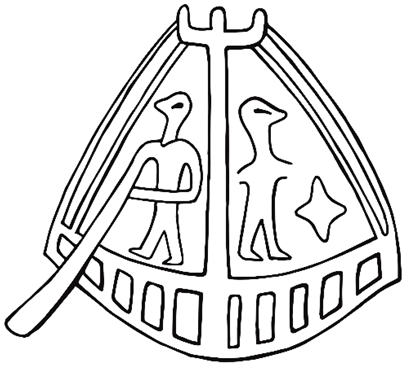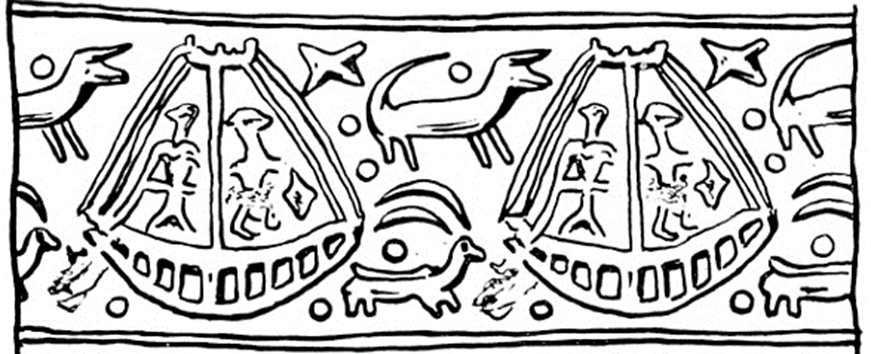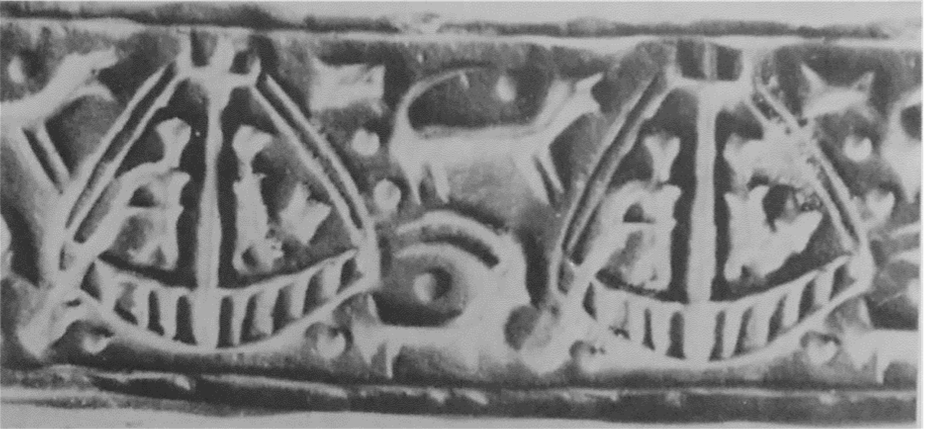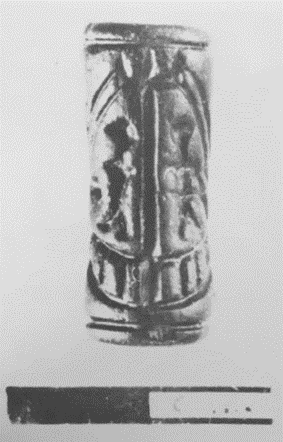Ship to the right with a crescentic hull formed by two horizontals connected by seven verticals. There are no stem ornaments, instead the keel line is a continuous smooth curve that joins the gunwale at each end. The mast is amidships and is seen through the hull, with a crow's nest at the top. The double oblique lines leading from the top of the mast to the bow and stern respectively could be either stays or lifts. Two figures stand upright facing in opposite directions. The man on the left is manning the quarter rudder. The ship is surrounded by horned animals, oxide ingots and dots. The vertical lines of the hull are somewhat difficult to interpret, but possibly represent the ribs of the hull. Basch argues that the ship is represented in the x-ray approach since the mast is seen through the hull. The crow's nest has a very close parallel from one of the ship graffiti from temple 1 at Kition as well as another graffito from Nahal ha-Me'arot. The depiction of oxhide-ingots is very interesting as these were arguably the primary export of the island during the LBA. This strengthens the interpretation that this is a commercial type of ship, as suggested by its rounded hull.
Sailing ship with crow's nest
C96
end of 13th century B.C. (Late Cypriot)
Cyprus
cylinder seal
Cyprus Museum, Nicosia inv. N 40
Basch 1987: 73-74, no. 147-48; Kenna 1967: 573, fig. 31; Wachsmann 1998: 66-67, fig. 4.10; Westerberg 1983: 18, no. 16, fig. 16
Basch, L. 1987. Le musée imaginaire de la marine antique. Athens: Institut Hellénique pour la preservation de la tradition nautique.
Kenna, V.E.G. 1967. “The Seal Use of Cyprus in the Bronze Age II,” BCH 91: 552-77.
Wachsmann, S. 1998. Seagoing Ships & Seamanship in the Bronze Age Levant. College Station, TX: Texas A&M University Press.
Westerberg, K. 1983. Cypriote Ships from the Bronze Age to c. 500 B.C. (SIMA, Pocket-books, 22). Göteborg: P. Åströms förlag.





